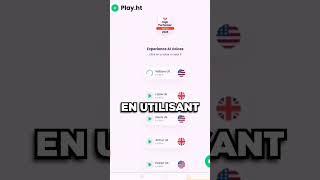ChatGPT can be a great tool for research, if you use it right. These are 5 prompting techniques that can help you get better results:
1️⃣ RISE: Role, Instruction, Steps, Example
Example: “Act as a research assistant. Summarize key arguments in this article (upload article). Break it down into: 1. Main claim, 2. Supporting evidence, 3. Limitations, 4. Practical applications.” Perfect for structuring literature reviews!
2️⃣ CIDI: Context, Instruction, Details, Insights
Example: “I’m writing a thesis on climate policy. Summarize research on policy gaps in renewable energy with a focus on the past 5 years. Highlight key findings, unresolved issues, and potential areas for further research.” This gives both breadth and targeted insights.
3️⃣ PQRF: Problem, Question, Role, Format
Example: “The challenge is analyzing survey data. How would a data analyst recommend structuring findings on respondent demographics? Provide a bullet-point list to keep it organized.” Ideal for turning data into clear, actionable points.
4️⃣ TACS: Topic, Audience, Constraints, Structure
Example: “I’m drafting a methodology section on survey data analysis for a social science thesis. Make it suitable for a professional audience, within 200 words, and use subheadings for clarity.” Great for building sections that need structure and brevity.
5️⃣ SPEC: Specificity, Purpose, Examples, Constraints
Example: “Generate a discussion section on the impact of social media on student productivity, focusing on quantitative studies. Aim for a balanced view, include one pro and one con, and keep it under 150 words.” This keeps responses concise and relevant.
Comment below—what prompts do you need most for your thesis or research? Let’s make AI work for you!
#chatgpt #prompts #researchtips #thesishelp #phdlife #phdstruggles #thesiswriting #phdthesis #studenthacks #studyhacks #chatgpthack #aiforstudents #aitools #academicwriting #academicweapon #academicsuccess
1️⃣ RISE: Role, Instruction, Steps, Example
Example: “Act as a research assistant. Summarize key arguments in this article (upload article). Break it down into: 1. Main claim, 2. Supporting evidence, 3. Limitations, 4. Practical applications.” Perfect for structuring literature reviews!
2️⃣ CIDI: Context, Instruction, Details, Insights
Example: “I’m writing a thesis on climate policy. Summarize research on policy gaps in renewable energy with a focus on the past 5 years. Highlight key findings, unresolved issues, and potential areas for further research.” This gives both breadth and targeted insights.
3️⃣ PQRF: Problem, Question, Role, Format
Example: “The challenge is analyzing survey data. How would a data analyst recommend structuring findings on respondent demographics? Provide a bullet-point list to keep it organized.” Ideal for turning data into clear, actionable points.
4️⃣ TACS: Topic, Audience, Constraints, Structure
Example: “I’m drafting a methodology section on survey data analysis for a social science thesis. Make it suitable for a professional audience, within 200 words, and use subheadings for clarity.” Great for building sections that need structure and brevity.
5️⃣ SPEC: Specificity, Purpose, Examples, Constraints
Example: “Generate a discussion section on the impact of social media on student productivity, focusing on quantitative studies. Aim for a balanced view, include one pro and one con, and keep it under 150 words.” This keeps responses concise and relevant.
Comment below—what prompts do you need most for your thesis or research? Let’s make AI work for you!
#chatgpt #prompts #researchtips #thesishelp #phdlife #phdstruggles #thesiswriting #phdthesis #studenthacks #studyhacks #chatgpthack #aiforstudents #aitools #academicwriting #academicweapon #academicsuccess
- Catégories
- prompts ia














Commentaires